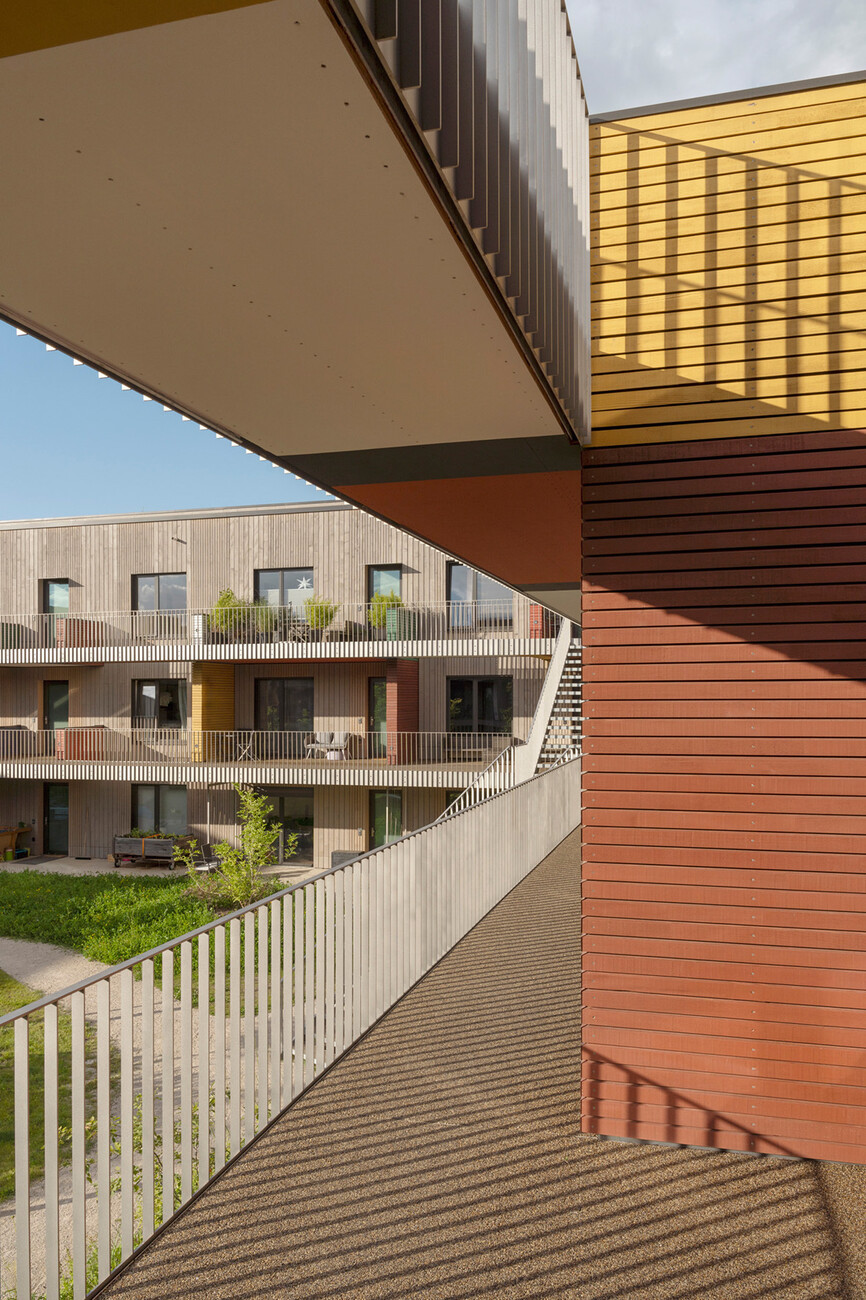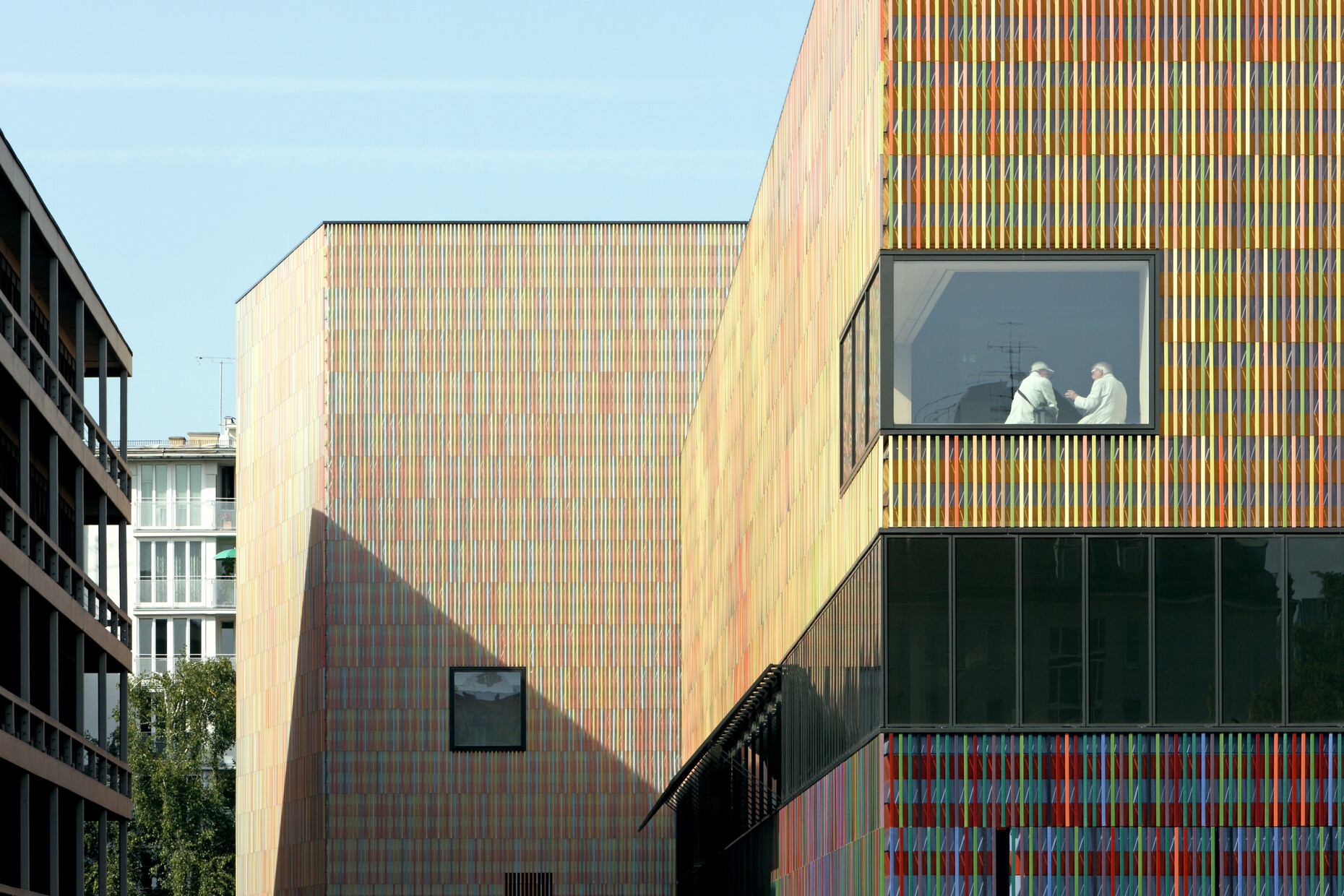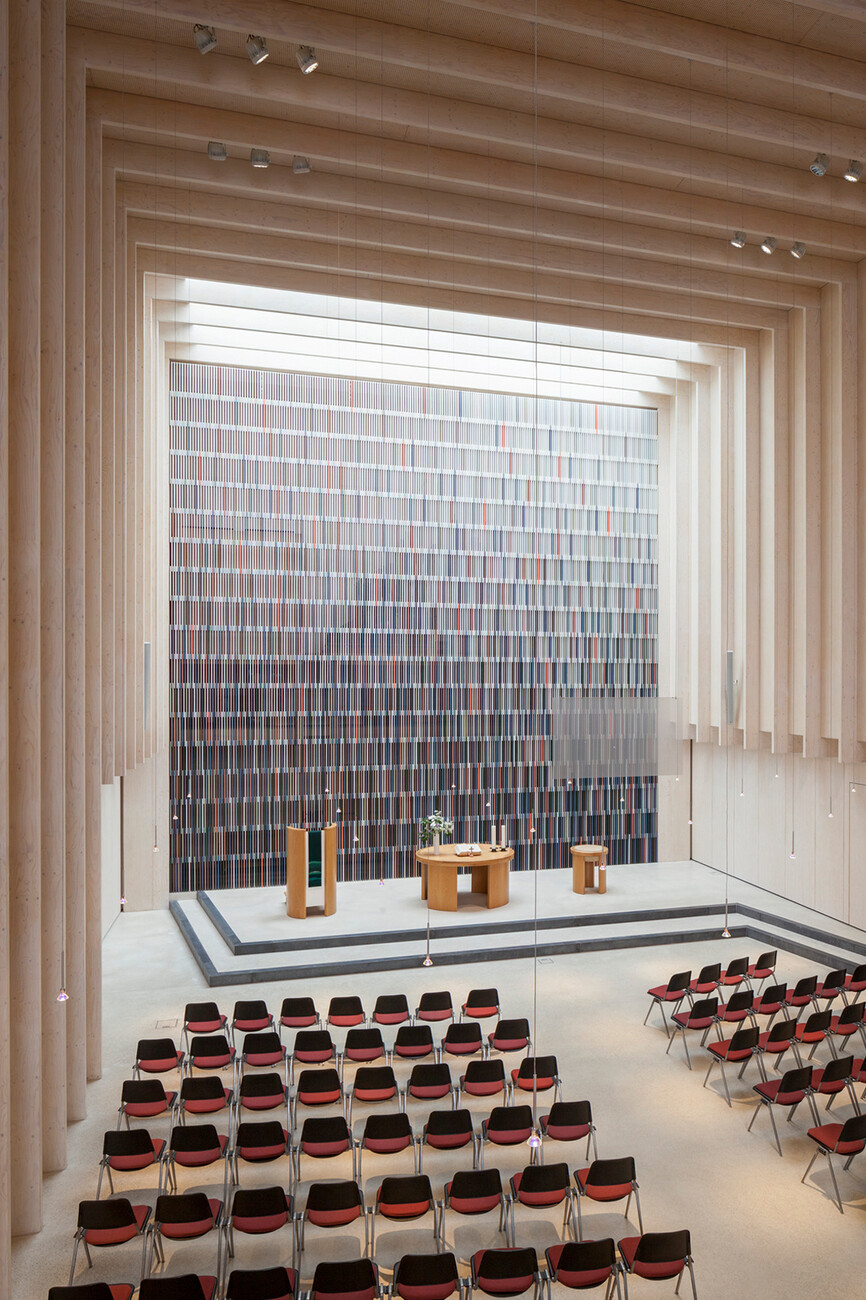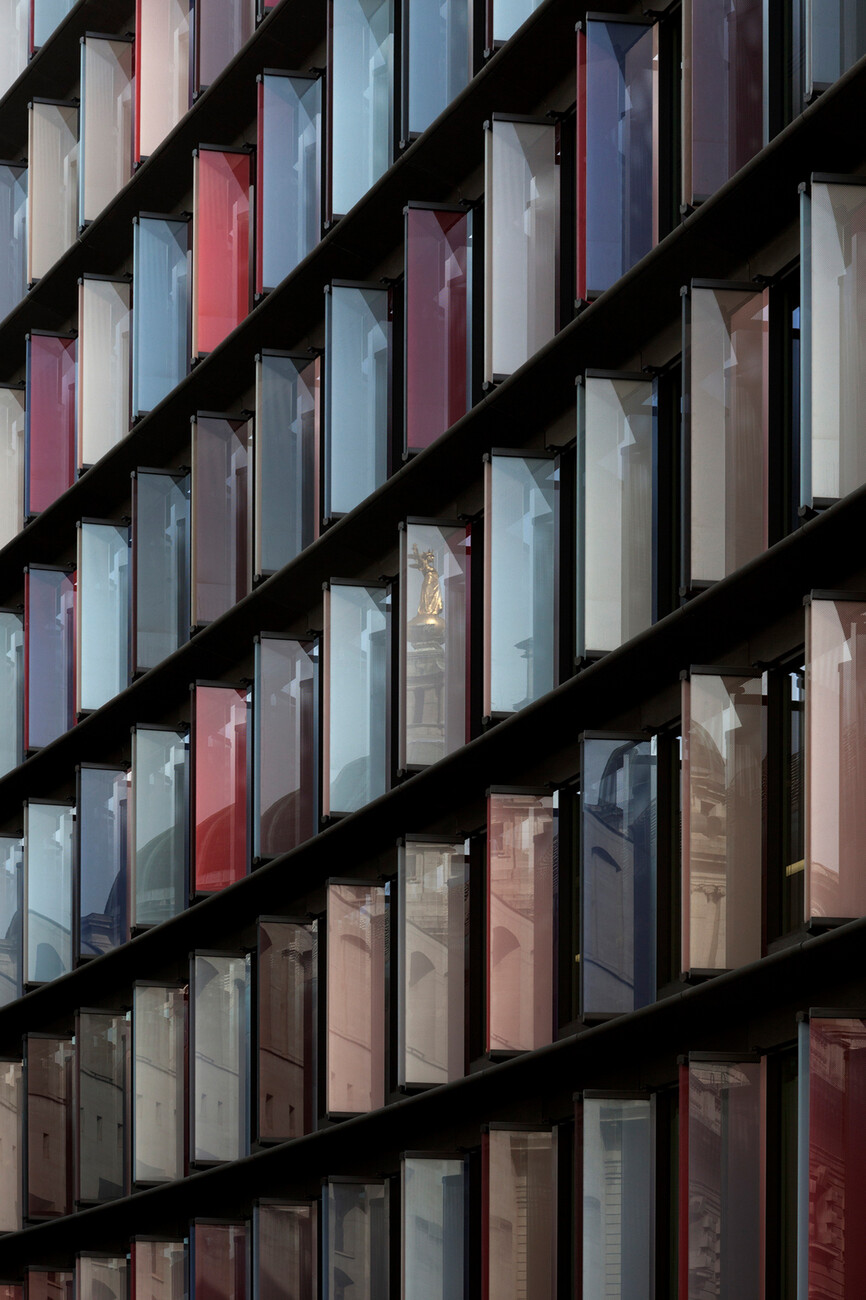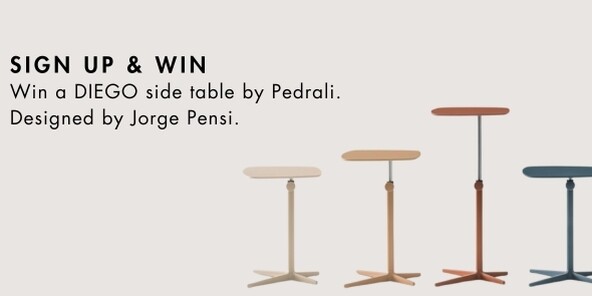Spotlight on Women Architects – Louisa Hutton
Louisa Hutton is a cosmopolitan architect who is a pleasure to listen to, not least because of her distinguished language, a refined British English. Her German, which has been coloured by her experience, has the same charm, but the office language is mostly English anyway, partly because of the high proportion of international employees. Living and working in Germany was not something she was born into. Born in Norwich in 1957, she first studied at the University of Bristol and then at the renowned AA School of Architecture in London. It was the heyday of the AA, when it enjoyed the greatest international renown with teachers such as Peter Cook, Zaha Hadid, Rem Koolhaas, Elia Zenghelis and Peter Wilson. Louisa Hutton met Matthias Sauerbruch (born in 1955) at the AA, who later became Elia Zenghelis' partner in the OMA office (Rem Koolhaas, among others), while Louisa Hutton worked for Alison & Peter Smithson. In 1989, the two founded their joint office sauerbruch hutton in London, which moved to Berlin four years later.
In London, the couple's life revolved around the university and the office, where they mainly worked on competitions. As they only had small commissions, they had plenty of time to reflect and draw, and this is how they developed their distinctive style. Among other small projects, they converted a Victorian house into their own office and home in 1990/92. The curious drawing of this, an axonometric representation of the roof area from two angles, from below and from above, has been published many times. This is also due to the colourfulness that already points the way for the office. Colour then plays a decisive role in almost all later projects. There wasn't much work in the UK, so they entered competitions abroad.
The second one, for the headquarters of the housing association GSW in Berlin's newspaper district, was a direct hit. Winning this competition and the prospect of realising the project prompted them to move their office to Berlin in 1993. The GSW office tower, which appears in various shades of red when viewed from the west, is still considered the most beautiful high-rise in the city. At the same time, the Photonics Centre was built in Berlin-Adlershof, two fully glazed institute buildings with an amoeba-shaped floor plan, whose sun protection slats glow in all spectral colours.
Like few other teams, they have succeeded in creating their own style. It is the flowing, rounded shapes that characterise the buildings and furniture, and it is the unmistakable artistic style of presentation. And it is the cheerful colour palette used to colour the plans. But it is not only the drawings that are colourful. The use of bold colours has become a trademark of the two architects – almost every building features a different, distinctive artistic colour scheme. Nowadays, with its silver-grey steel and glass architecture, it is easy to stand out in the cityscape with colour. In this respect, however, they have always been unbiased and broken new ground. Their ‘Experimental Factory’ in Magdeburg, built in 2001, is already strident in its large form and even looks as if it has been thrown over with a pink, orange and silver striped blanket.
While the latter may overtax the taste tolerance of the average citizen with its daring colour combination, Sauerbruch Hutton's creations are otherwise generally well received. Take, for example, the Federal Environment Agency in Dessau, inaugurated in 2005, which is, of course, an extremely exemplary ecological building equipped with all possible energy-saving and environmentally friendly technologies and which also impresses architecturally with its green atrium and pleasant working atmosphere. The building project was particularly suited to them, as Sauerbruch Hutton were among the pioneers of ecological construction. Here, the coloured surfaces run along the window bands of the building, which winds its way around an atrium – with warm red and orange tones predominating to the south and cool blue tones to the north.
They enjoy designing for free-standing, solitary locations. In Henningsdorf near Berlin, for example, where they made an elliptical, two-storey disc float: the town hall as a new landmark in the sprawling, disparate town centre. In Cologne on the Rheinaue, where they realised an office centre with two amoeba-shaped structures. In Heilbronn, they erected the Experimenta Science Centre. In Munich, the ADAC had a significant high-rise building constructed on a five-fingered base as a proud landmark. At the ADAC's request, it was naturally kept in a family of yellow tones, but the design was complemented by numerous grey-purple tones that make the building shine. In Venetian Mestre, however, the M9 Museo del '900 is an implant that has been carefully integrated into the existing inner-city structure. The new building, with its iridescent ceramic façade in the colours of Mestre's bricks and plaster, combined with the sensitively renovated old parts of the building, has created a lively, versatile cultural centre that has been very well received by the citizens.
The projects are worked on jointly in the office. Louisa works more internally, while Matthias looks after the clients, especially for projects in Germany. She takes a sober view of her position as a woman in the construction industry. There are many prejudices against women, she says, but things are slowly improving. ‘You have to be very assertive, especially in our profession.’ A certain division of labour in the office also results from the fact that Matthias tends to design conceptually and Louisa goes into more detail – including constant mutual criticism. This also applies to colour schemes, which are so important to them and whose palettes they discuss together.
Louisa became interested in perceptual phenomena during her teaching assignments. How people position themselves in the world, how they experience architecture. She is currently reading Erich Fromm and authors outside the field of architecture or those who only touch on architecture. She has become more thoughtful and tries to tie together the threads of life. ‘Someone once said: You have to live your life forwards, but it only makes sense when you look back.’ What is important to me today is life, not just architecture." For her, working in the office is also a kind of teaching activity when it comes to finding the right path and thinking about it aloud.
Architectural firms from Germany are quite successful abroad, but more so in investment circles than in the glitzy scene of international star architects. This has to do with communication deficits, and perhaps also with the lack of a certain glamour factor that solid German architecture and its protagonists lack. The sauerbruch hutton brand, on the other hand, has an international presence, naturally benefiting from the significance and uniqueness of its buildings. Louisa Hutton has played a major role in establishing this international presence through her guest professorships at various universities, lectures, symposia and jury memberships. Berlin as a new location proved to be not without its problems. Three months after the GSW competition, Senate Building Director Hans Stimmann came to power, a champion of ‘stone Berlin’ and a declared enemy of sauerbruch hutton architecture, which eschews symmetry and perforated façades. He was unable to prevent the GSW, but public senate commissions were no longer to be expected. This forced the two to look nationally and internationally, which they did with great success. Since then, the office has been active throughout Europe and worldwide.
Sauerbruch Hutton's buildings often have a manifesto character; they are statements on the respective topological, social and temporal situation. ‘Buildings are like manifestos of architecture,’ she says, representing something, being legible and communicating. And they do this differently in every location. That is why there are no standard solutions that can be applied in many places.
Nevertheless, they have developed a kind of individual style that makes their buildings recognisable. However, in order to ensure the continuity and further development of this style, the management structure was distributed across an unusually large number of shoulders in a long-term office succession process, namely 16 partners and 14 associates. For Louisa Hutton, the office, where one spends so much of one's life, is also a large community – almost like a family.
Update: Franklin Village Mannheim has been awarded the German Architecture Prize 2025.


